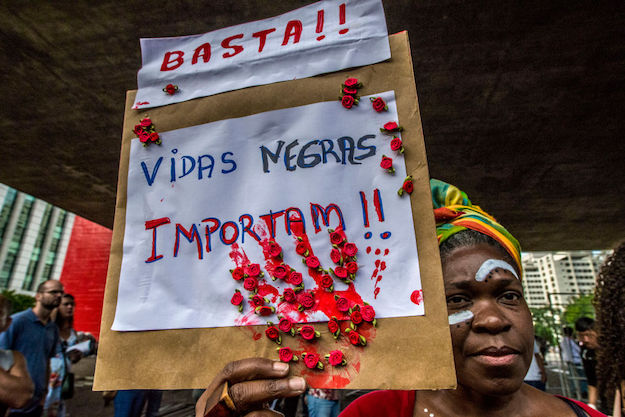Brazil is suffering an epidemic of violent crime. Persistent inequality, youth unemployment, high levels of impunity and punitive drug laws have contributed to a surge in homicidal violence since 2010. Home to just 3 percent of the world’s population, the South American nation now registers 14 percent of all global homicides.
Accounting for the economic costs of this phenomenon isn’t easy – it’s impossible to put an adequate price on the pain and suffering endured by victims of violent crime, much less their families and friends.
But a groundbreaking study issued yesterday by Brazil’s presidential office for strategic affairs marks a significant step in that direction. Authored by a small internal team and a group of advisers, the report measures the economic effects of violence in Brazil on everything from public health and criminal justice to private security and the earning potential of both victims and offenders. The study offers a glimpse at the scale of Brazil’s violence and why past strategies to control it have proven ineffective. It should be a wake-up call for all Brazilians.
The report, The Economic Costs of Crime in Brazil, shows how quickly the costs of violent crime add up. In 2015, the most recent year for which comprehensive data is available, public security costs totaled 1.36 percent of Brazil’s GDP. Spending on private security amounted to 0.94 percent, judicial processes 0.58 percent, incarceration 0.26 percent, and medical expenditures related to crime 0.05 percent. According to the study, the killing of a young Brazilian costs about 550,000 reais (about $150,000) of lost productivity over their lifetime.
All told, the economic burden of violence in Brazil equals roughly $77 billion per year, or 4.38 percent of GDP. Put another way, violent crime is a regressive tax and a monumental obstacle to economic growth.
And yet, even as spending on crime-reduction has increased in recent years, violence has risen along with it. Public spending on crime fighting has increased by over 170 percent since the 1990s, but violent crime rates have steadily risen over the same period. This suggests that Brazil’s favored approach to crime reduction – heavy-handed policing, punitive sentencing and mass incarceration – is ineffective. While these measures may offer a temporary sensation of security, they are costly and yield few demonstrable results.
The good news, also highlighted in the study, is that there exist several cost-effective measures statistically proven to prevent and reduce crime. The study highlights “hot spot policing” and “focused deterrence,” which deploy officers to high-crime towns, neighborhoods or even street corners at times when crime is most likely to occur. These policies recognize that certain types of crime cluster in space, time and among particular at-risk populations and, when well implemented, reduce violence without causing it to balloon elsewhere. Likewise, multiple types of firearm regulations – particularly restrictions on certain types of weapons and carrying outside the home – are proven to have strong crime reduction effects.
The costs of crime can also be reduced through smarter sentencing and incarceration policies. To be sure, Brazilians should appropriately punish violent offenses. But alternatives to jail time for non-violent crime and first-time offenders are not only more effective on public security grounds, they save tax-payer dollars. Community service, educational options, vocational training, substance-abuse treatment and restorative justice (e.g. mediation between victims and offenders) can reduce recidivism and help inmates become productive citizens. This is especially important in a country where roughly 70 percent of all ex-offenders find their way back in jail within five years.
Highly targeted interventions to modify public spaces are also critical. Strategies that foster high quality infrastructure, public transport, green spaces and community recreation in high-risk areas have demonstrable crime reducing effects. Likewise, temporary regulations on alcohol – including through taxes, price controls and temporal restrictions – are proven to be effective. The strategic use of smart street lights and cameras are also associated with reductions of certain types of crime.
Lowering crime costs requires thinking both short- and long-term. The most effective and efficient crime control strategies include early childhood interventions – providing critical support before law-breaking behavior begins. For example, nurse visitations, pre-school programs, parenting skills development, child social skills training, school-based programs, community-based mentoring, measures to reduce school evasion, and aggression replacement therapy all have positive track records.
Facing monumental fiscal crises across all levels of government, Brazil needs to do more with less. If Brazilians are serious about getting the crime problem under control, they need to take a much harder look at the costs and benefits of prevention and reduction. What is urgently required are evidence-based strategies – good intentions are not good enough. There’s an old saying that “crime doesn’t pay.” The Economic Costs of Crime in Brazil reveals this to be true: it’s the citizens who are footing the bill.
—
Muggah is the co-founder of the Igarapé institute and the SecDev Group and Foundation. He provided technical assistance and recommendations for The Economic Costs of Crime in Brazil.








